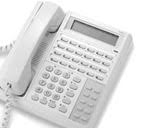Hygienic Plastic Wall Cladding Fitting Instructions
A guide to fitting your new plastic wall cladding.
********* Call us now on 0114 244 6357 *********
Start with the basics
Each sheet is secured to the wall on all four edges by screwing the ‘H' joints and ‘J' edges to the wall through their wider back legs. PVC sheets may have the added security of adhesive. Beads of silicone behind the ‘J' edges and on the back legs of the ‘J' edges and ‘H' joints will ensure a watertight installation.

Step 1
The ‘J' edge is screwed to the wall along the top and bottom edges over beads of silicone. The silicone seal is especially important at the base where wet cleaning may occur.
Step 2
The first sheet is dropped into the bottom ‘J' and flexed into the top. Beads of silicone on the back legs will seal against the back of the sheet.
Step 3
Trim an inch or so from each end, off the back of the ‘H' joint.
Slide it onto the edge of the sheet, leaving clearance for expansion, and drill through and secure the other side of the joint to the wall. Use a bead of silicone on the back leg to seal the sheet.
Drop the next sheet into the bottom ‘J' and flex into the top. Slide sideways into the joint covering the screws just fitted. A wooden block on the edge of the sheet and a few taps with a hammer will help. Start at the bottom and ease into the ‘H' joint at a very slight angle. Add the next joint and the next sheet and so on.

Step 4
Add either ‘Internal' or ‘External' Angles in the corners of the room and around columns, windows and doorways. Cut them to length (‘mitre' the corners where necessary) apply over beads of silicone and fix with the drive rivets. Start at the top, hold it tightly into or onto the corner, drill through the angle into the wall, and without letting go, push in a ‘Drive Rivet'. Hammer the pin into the rivet. Move down the angle 12 - 18 inches and do the same. Some people manage with riveting just one side of the angle whilst others prefer opposing pairs, (one on each side). Avoid drilling too close to the corner of any brickwork.

Wall cladding fitting hints and tips
Walls are often not straight or level
If you avoid pulling the joints and edges into any dips, you can create a flatter clad surface. Sometimes a bit of packing under the profiles before screwing is useful.
Using Drive Rivets
The right size of drill will depend on the age of the ‘drill bit', and what you are drilling into. Try 6mm to start. If the rivet fits with no resistance, it is too loose, (wrap some foil around that one and put it back). If the hole is too small, the pin will not go in all the way. (If it is nearly in and secure, put a ‘Stanley' blade against the protruding pin and tap the blade. It will come off nice and clean).
You may consider putting one or two rivets on the centre line of each polypropylene sheet.
If ‘Drive Rivets' cause a ‘pinched' effect, find a material say 1 or 2 mm thick and cut a slot into it. Hold this under the drive rivet head whilst hitting the pin and draw it out afterwards.
Joints near windows and doors
It is often easier to cut sheets to finish straight up and down alongside window and door edges instead of cutting the window or door shape into the sheet.
External Angles around door and windows with reveals
Cut up sheet ‘off cuts' to fit the reveals up to the window or door frame. Most people leave a 2-3mm gap up to the frame and finish with a silicone seal. (‘J' edge up against the frame would be perfect if you choose).
Cut the angles to size, ‘mitre' the corners for the best effect and trial fit before fixing.
Make slight adjustments with your utility knife. (Always cut away from your fingers).
Window ledges can be left in place and finished underneath with a silicone seal or a ‘J' edge. Alternatively the ledge can be sawn off and the angle used here as well.
Screwing the Joint and Edge to the wall
I learned this from a good fitter. Using our screws, a 5.5mm masonry drill and red plugs, drill the hole through the back leg and into the wall to the required depth, push the end of the plug into the hole in the back leg, finger fit a screw into the plug, and knock it through into the wall with a hammer, and then screw it home. (A good cordless drill driver is invaluable)
Silicone is best used within the installation rather than as an afterthought on the outside. Finishing at a worktop may require the use of a food approved product. To save a massive amount of heartache, never get it where you don't want it.
Electrical work should of course be done by a professional, but you have a choice as to what to do with the wiring. You may channel it into the wall behind the sheet. You can then carefully cut into the sheet and flush fit fittings into the wall, but by far the easiest way is to bring the wire through a hole in the sheet and surface mount your plus and sockets. If you want the ability to service or change the wiring at a later stage then use plastic conduit with a snap on cover. (Preferably around the top)
Plumbing
A great amount of tidying up can be achieved with plastic ‘push fit' products which never need painting. No soldering and it only comes apart again when you want it to.
Cutting back a pipe where it comes through a wall will make fitting the sheet a lot easier and you can push fit connect to it later. (Don't cut flush with the wall - leave enough to connect to)
Expansion
Always leave room for expansion around a sheet. If using drive rivets through a sheet, cut a slightly oversize hole in the sheet to allow for movement. Expansion chart available upon request.
Cutting
Low Density PVC Sheets - Cut all the way through with a 'Stanley' Knife.
Medium Density PVC Sheets - Cut all the way through with a ‘Stanley' knife.
High Density PVC Sheets - Support on table and use a saw (or an electric jig saw).
Adhesive
Use on all three PVC Sheets. Apply in "S" shaped lines vertically to the wall with dots in between. When the sheets are bedded onto the adhesive, the adhesive will flatten out to cover a larger area of the sheet. A Hi-Plas Adhesive roller will help in spreading the adhesive over a larger area once the sheet has been applied to the adhesive. Useage differs however most installers use 2 tubes per sheet. You may wish to use more or less adhesive depending upon how solid you want the sheets to look and feel back to the wall. Always read the instructions.
Tubs of adhesive are also available to give a full coverage of adhesive on the back of the sheets if and where required. Always read the instructions of the HPL wall cladding.
Free wall cladding samples
For more information and/or free samples of our wall cladding system, e-mail us via our contact form or give us a call on 0114 244 6357.

0114 244 6357
Hygienic Plastics Ltd, Unit 3, Carbrook Business Park, Dunlop street, Sheffield S9 2HR
